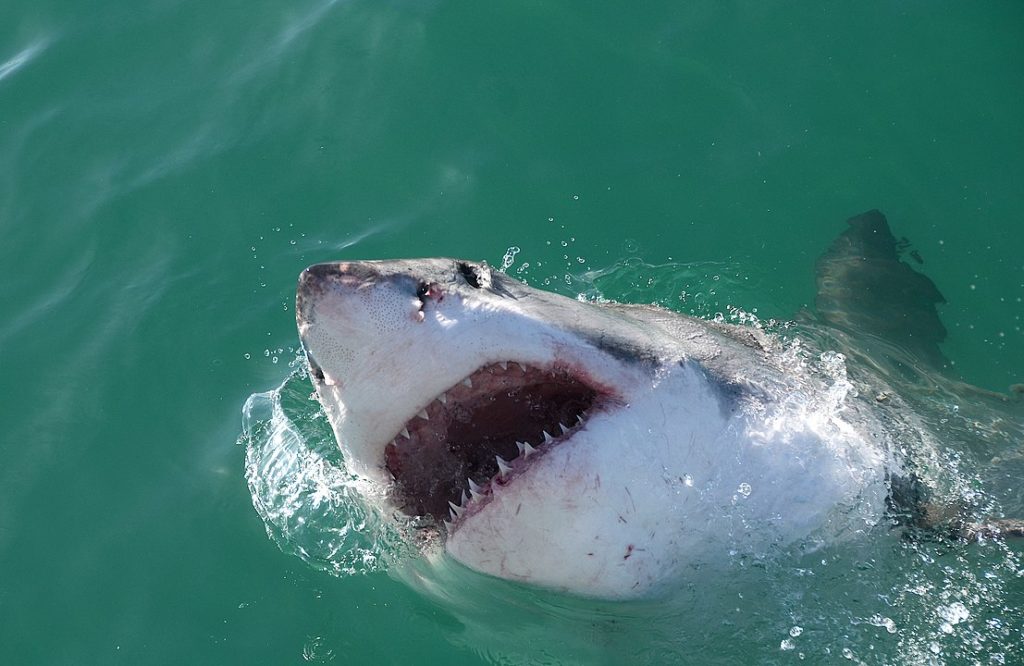Gansbaai’s favourite shark, Mini Nemo – named after the titular character from the hit Disney film because they both have a stunted pectoral fin – returned to the area on February 13 and was catalogued by the crew of Marine Dynamics for the tenth consecutive year.
“We first logged this shark as a young 2.5m male and it is simply incredible to see him grow over the years returning as a healthy 4.0m adult,” said environmental conservation organisation, Dyer Island Conservation Trust (DICT) in a blog post.
On the morning of February 17, DICT launched two vessels from Kleinbaai harbour with the aim of attracting bronze whaler sharks to the boats, as part of the PhD work of Toby Rogers, a collaborative project with Shark Spotters, Acoustic Tracking Array Platform (ATAP) and Save Our Seas Foundation.
The research aims to “quantify the shark species movement ecology and assess their population dynamics in Southern Africa,” according to DICT.
The day’s operations were a success, two bronzer sharks – a male and female – were tagged by 12 pm.
“Then, a large black shadow and dorsal fin appeared in the distance, heading straight towards the research boats,” says Alison Towner, a marine biologist and PhD candidate embedded with DICT.
To the delight of the onboard crew, the dorsal fin belonged to Mini Nemo, who they had all been hoping to see. The Great White circled the vessel and rolled on his side-eyeing the crew – as he made passes at the bait. The DICT crew managed to attach an acoustic tag to Mini Nemo’s left side and were able to record his ID tag by inserting their hydrophone – a mic used for recording or listening to underwater sound – into the sea.
Mini Nemo was seemingly unbothered by being tagged as he continued to circle the research vessels for two more hours.
“At one point a Cape fur seal appeared off the bow and predated on a large octopus, thrashing, and throwing the mollusc around for over ten minutes,” said Towner.
“We were almost certain the white shark would try to predate on the seal- but to our surprise- he showed zero interest!”
DICT said two of the individuals onboard – Marine ecologist Leigh De Necker and Brandon Kilbride – assisted with tagging and were delighted at the shark sighting because it was their first time seeing one in over three years.
The organisation said there is much debate about where the Great Whites have migrated to from Gansbaai and False Bay but it is hopeful that the spatial movement data of the species will shed some light.
“We look forward to seeing, where Not-so-mini Nemo goes to from Gansbaai, via the national array of receivers through ATAP,” said DICT.
Picture: Wikimedia Commons/Great white shark near Dyer Island






